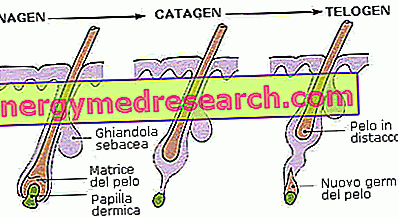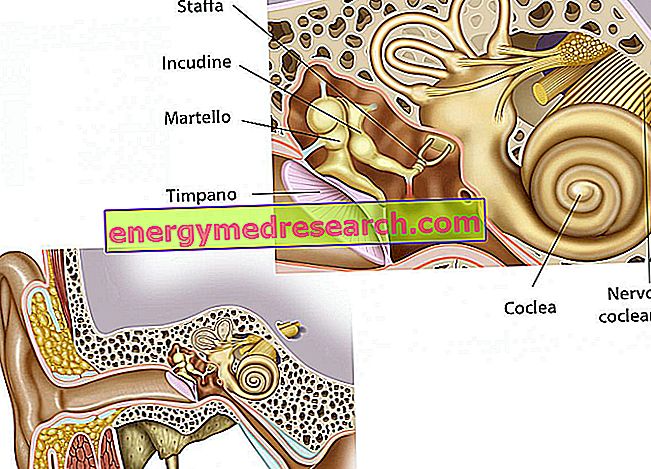The hair structure can be divided into three distinct portions:
1) one external to the follicle, visible, called STELO or FUSTO
2) one inside the follicle itself called ROOT, normally not visible, because it is housed inside the skin;
3) an even deeper, called BULBUS, which contains several groups of cells specialized in the germination and proliferation of the hair. The sebaceous gland is located laterally than the hair follicle, which secretes sebum, a fatty substance that protects the scalp and the hair itself from external aggressions.
Hair Growth
Hair growth proceeds through distinct stages. The cyclic activity of the follicle is characterized by the alternation of periods of intense growth and periods of stasis or even involution.
The follicular cycle is divided into three phases: anagen, catagen and telogen .
Not all hair is in the same phase but it grows in different ways and rhythms.

Anagen or growth phase: during this growth period some changes occur at the cellular level. The follicle is in full proliferative activity and the hair grows on average 0.3-0.4 mm per day. The duration of this phase is generally between 2 and 7 years and is heavily influenced by hereditary and sexual factors (longer in women, shorter in men).
Catagen or involution phase : during this period the follicle stops its proliferative activity and the hair does not stretch anymore. The duration of this phase is very short, around 2-3 weeks on average.
Telogen or resting phase : during this time the follicle is completely inactivated. The hair is still inside the follicle but anchored by weak intercellular ligaments that will soon give way under the thrust of the new hair. At the end of this phase, in fact the follicle resumes its activity entering the anagen phase and generating a new hair. The average duration of this period is three months.
The study of the life cycle of the hair is very important to establish the condition of the scalp. For example, it may happen that phenomena such as stress, hormonal and / or metabolic imbalances, or other pathological conditions, interfere with the normal hair growth cycle. In these cases, the anagen phase is shortened and consequently the hair is shorter and thinner. There may also be a delay in the growth of the new hair which will contribute to further aggravate the problem of thinning or alopecia (from the Greek "alopex" = fox, a term used to emphasize the similarity with this animal that loses hair twice in a year) .
Hair health



